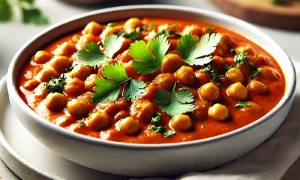Hot Pepper Spray for Repelling Harmful Insects: Squash Bugs and Beetles

Originally Published: October 7, 2019
Having problems in your garden with plants being ravished by insects? Squash bugs or squash beetles could be to blame.
These insects can destroy an entire healthy plant in a day’s time. They can even spread bacterial wilt, which causes the vines to rapidly wilt and die.
What Kinds of Plants do Squash Bugs and Beetles Eat?
Despite their name, squash bugs aren’t super picky with the plants they’ll destroy. Many of the plants that they’ll primarily feed on are in the squash family, along with other vine-growing vegetables. They typically will cause damage to young plants early in the growing season. This makes your plants most vulnerable in the seedling and flowering stages.
Here are a few of the commonly grown vegetables known to be damaged by these pests.
- Summer squash
- Zucchini
- Acorn squash
- Melons
- Pumpkins
- Cucumbers
What Plants are Safe from Squash Bugs?
Squash bugs generally stick to vegetable plants that are in the squash and cucumber families. Other vegetables such as peppers, beans, corn, and tomatoes are generally less affected by these insects.
What Do Squash Bugs Do to a Plant?
While many beetles that cause damage to plants will eat the leaves and create holes in the plants, squash bugs operate a little differently.
These bugs such the sap out of the leaves with their mouth parts that have the ability to pierce the leaves’ surface [1]. This causes yellow spots on the leaves where the feeding took place and can eventually cause them to turn brown and wilt.
Identifying Squash Bugs and Beetles
You may be thinking – there are lots of conditions that could cause a plant’s leaves to turn yellow or brown and wilt, so how do I know if I have squash bugs?
Learning to spot squash bugs and their eggs is relatively easy since they are rather unique.
Adult Squash Bugs
- Approximately 5/8 inch long
- Long, flat, oval body shape with a pointed head
- Long antennas protruding from the top of their head
- Dark brown or gray color on top
- Orange and brown striped pattern on their abdomens
Squash Bug Nymphs
- Fully hatched nymphs start a little smaller than 1/8 inch long
- Typically begin white or lightly colored and darken as they mature
Squash Bug Eggs
- Oval shaped
- Burnt orange or bronze colored
- Laid in small clusters on the underside of leaves in corners where leaf veins meet
- About 1/16 inch long
Getting Rid of Squash Bugs, Squash Beetles, and other Harmful Insects
One of the most effective ways to get rid of squash bugs and beetles is to go out during the day when you can easily see them on the plants and pick them off by hand. The downside to this, of course, is that it’s extremely time consuming and tedious. It’s also not for the squeamish – you know, if you have a thing against bugs.
So here’s our dilemma: we want to get rid of the insects without killing them or our precious garden.
The solution: all natural DIY hot pepper spray to deter garden pests.
All Natural Garden Pest Repellent
This DIY hot pepper spray has saved my garden from desolation at the hands of these little buggers on numerous occasions. It’s 100% natural, and safe for your plants, animals, and the surrounding environment.
These pests simply don’t like it, and will stay away. Think about it, I wouldn’t want to live or lay eggs in a bed of hot pepper spray either!
You can spray this insect repellent directly on your plants to get rid of squash bugs and beetles. The best time to apply it is at night or first thing in the morning, while the insects are relatively inactive and the harsh sun has yet to get to the leaves.
The goal is to force the existing pests off of the plants, prevent them from laying eggs there, and to prevent new bugs from being attracted to the plants in the first place.
Like any repellent, it’s not guaranteed to be 100% effective, but it sure does reduce the amount of squash bugs and beetles, and leaves you with more of your fruits and vegetables.
For the best results, spray this on your plants every 2 to 3 days, or after a rain.
Hot Pepper Insect Repellent Recipe
Ingredients:
- 6 Cups Water
- 2 Hot Peppers (any pepper will work – cayenne or habanero seem to work well)
- 1 Tbsp. Organic Canola Oil
Directions:
- Chop up the hot peppers and add them to a jar.
- Thoroughly crush them to release as much of their juices as possible.
- Add 2 cups of water to the jar of peppers, then allow to sit overnight.
- Strain the pepper pieces from the pepper water, reserving only the water.
- Pour the pepper water into a spray bottle.
- Add the canola oil and the remaining 4 cups of water.
- Shake the solution well before each use.
Veggums references research from industry experts and reputable industry publishers to support claims or data in our content when applicable. Learn more about our publishing standards and practices in our editorial guidelines.
- University of Minnesota Extension - Squash bugs in home gardens
Accessed: September 16, 2022






